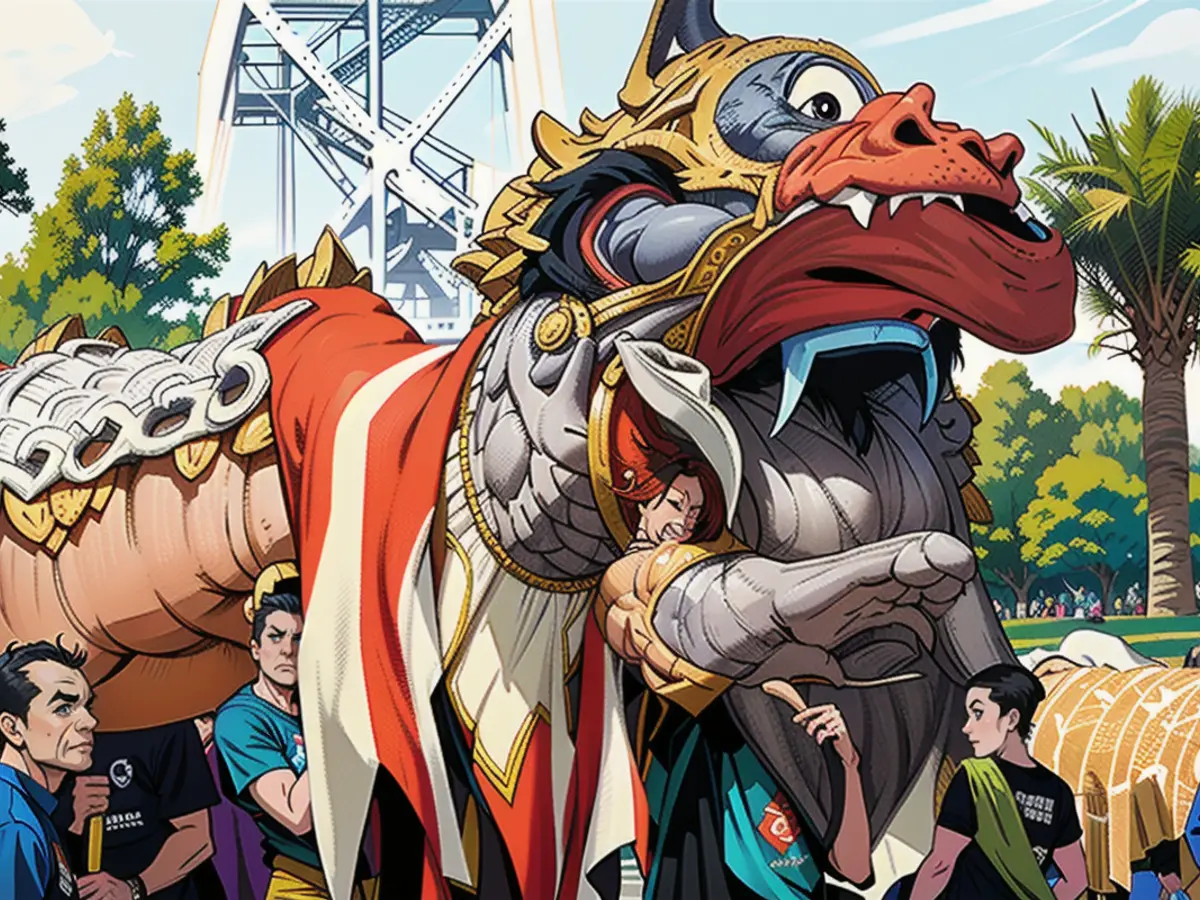Vandalism directed at the oldest Chinese parade dragon in an Australian museum.
Last week, there was a case of vandalism at the Golden Dragon Museum in Bendigo, approximately 100 miles northwest of Melbourne. According to the police and the museum's head, a man and a woman are suspected of causing AUD$100,000 ($66,900) worth of damage to artworks and historical objects. This happened on May 5, and then the suspects left in a silver Toyota Prado.
Investigators believe the couple used a liquid to destroy several statues and paintings. They were with two children during the act.
One of the objects damaged was "Loong," described as the "oldest complete imperial processional dragon in the world." In Chinese culture, Loong is a sacred mythical creature, typically translated as a dragon in English. It's often the main character in festivities and rituals involving dragon dances, which have been recorded since the Han Dynasty (202 BCE to 220 CE).
Bendigo, a city of around 100,000 people, has had a Chinese population for over a century. Chinese migrants initially arrived from southern China during the Victorian gold rush and once comprised 20% of the town's residents. They brought their traditions and culture with them, naming the area "Dai Gum San" or "Big Gold Mountain" as it was once known by Bendigo Tourism.
To this day, a Chinese dragon parade is held every Easter to raise money for a local hospital.
Founded in 1991, the Golden Dragon Museum aims to "document, interpret and preserve the Chinese heritage in Australia" as stated on its website. Loong, dating back to 1901, was once paraded through Victoria until its retirement in the 1970s.
Hugo Leschen, Chief Executive Officer of the museum, informed CNN that they discovered oil running down the nose of Loong. The museum's successor Sun Loong, also known for parading around Bendigo until it was retired in 2019, also had stains on its tongue. Other parts of the museum were also targeted.
A video from security cameras aired on CNN affiliate Nine News showed a woman with white sweater and grey beanie splashing liquid on a Buddhist altar. A man stood by her side in the clip.
Additionally, stains were found on more than 35 paintings and multiple statues of Chinese deities in the temple and the neighboring museum garden.
"With these further attacks, it is now evident that this was no random act of mindless vandalism but rather a planned and sustained malicious attack across various heritage, cultural, and religious sites for reasons unknown," Leschen said.
The Chinese Community Council of Australia criticized the vandalism in a statement. While police haven't commented on the motive yet, the council is worried that the act "may have been racially motivated."
Read also:
- Caught up in the present: the end of "The Crown"
- Through New Year's Eve with TV shows
- What's next for the series hits?
- Which shows will be on?
The vandalism at the Golden Dragon Museum involved damage to various artistic and historical objects, including the sacred dragon "Loong." Due to the style and extent of the damage, it's been suggested that the incident was not just an act of mindless vandalism but a deliberate attack on Chinese arts and culture.
Source: edition.cnn.com








